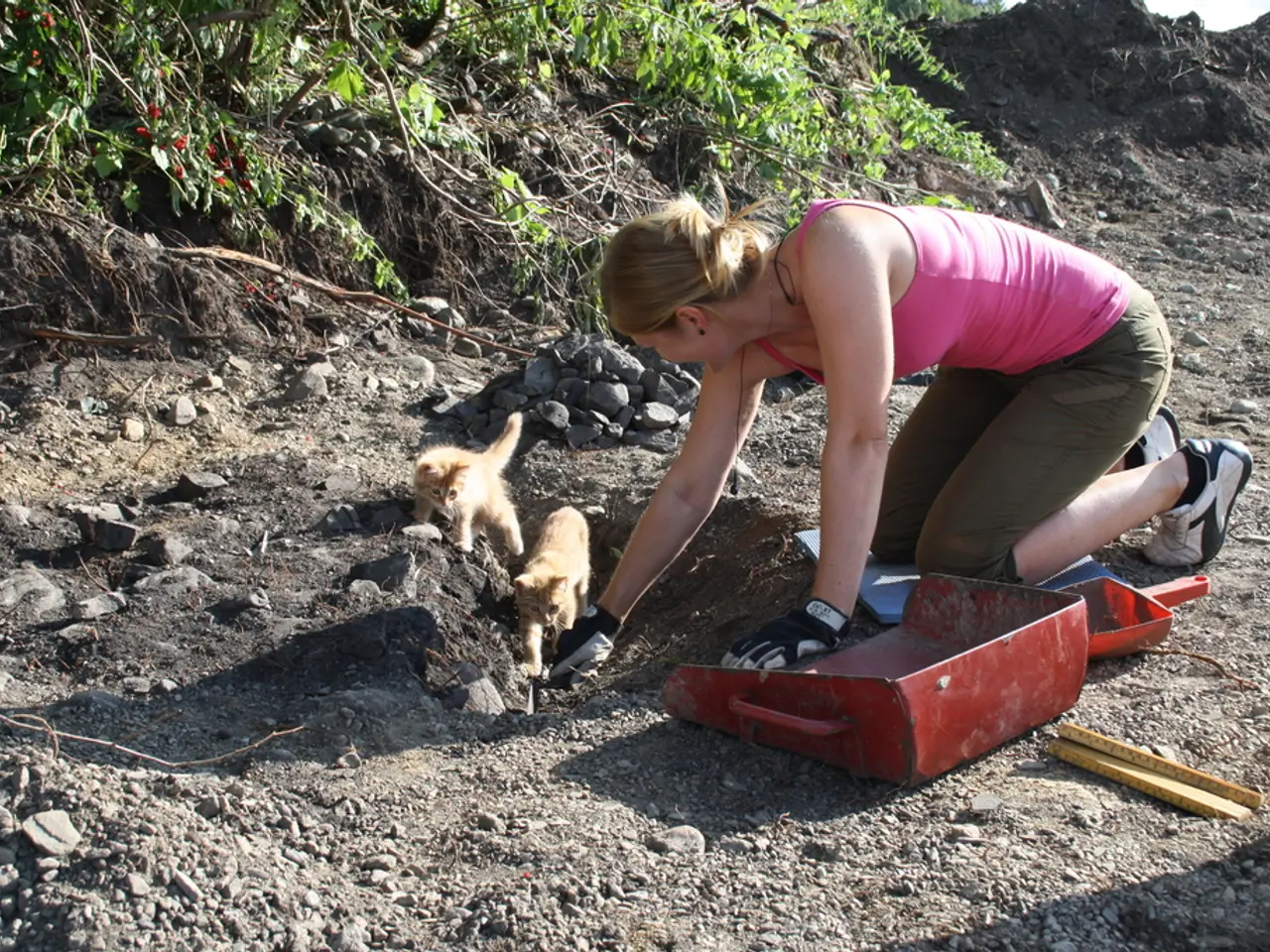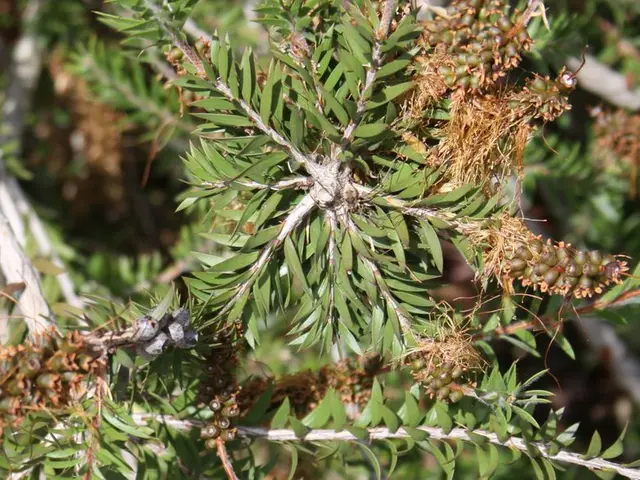Ideal Soil Compositions for Drought-Resistant Nerve Plants' Growth
In the lush, vibrant world of tropical rainforests in South America, a small, fascinating plant thrives - the nerve plant, or Fittonia. To help your Fittonia flourish in your home, follow these expert care guidelines for maintaining the appropriate soil moisture balance, preventing root rot, and promoting healthy growth.
First and foremost, it's crucial to use a soil mix that is moist but well-draining and slightly acidic in pH. This ensures that the soil retains some moisture without becoming soggy, which is vital to avoid waterlogging and root rot. Pre-mixed soils and custom soil mixes are both suitable options for nerve plants. To improve soil structure and drainage, consider adding perlite or sand to the mix. To enhance moisture retention, peat moss or coco coir can be added as well.
Watering your nerve plant consistently and deeply is essential. Aim to water when the top inch of soil feels slightly dry. Fittonias prefer a moist environment but are sensitive to overwatering, so adjust watering frequency based on temperature and humidity. More frequent watering is required in warmer conditions. Water at soil level to avoid excess moisture on leaves, which can promote diseases, and consider early morning watering to allow leaves to dry during the day.
Ensuring good pot drainage is another key factor. Use a container with drainage holes and a potting mix that drains well to prevent water from accumulating around the roots and causing rot.
Fittonias thrive in high humidity, around 60% or higher. To support this, you can mist the plant in the early morning or use a pebble tray with water beneath the pot to increase ambient moisture without wetting the soil excessively.
When repotting your nerve plant annually or biennially in spring or summer, use fresh, well-draining potting mix and consider adding orchid bark or perlite to improve drainage if needed. Choose a pot that is only one or two inches larger than the current one to avoid overwatering and rootbound plants.
Curling leaves indicate a need for more humidity. Increase moisture with a humidifier, plant mister, or a tray filled with pebbles and water. If your Fittonia's leaves are crispy or the soil is dry, increasing watering consistency and soaking the plant can help.
If you notice foul-smelling soil or root rot, inspect the roots, remove any brown, mushy parts, and repot the healthy portion of the plant. Yellow or brown leaves could be due to overwatering, pests, or root rot. Maintain a proper watering schedule and only water when the soil is dry.
By balancing these factors - moist but well-draining soil, consistent moderate watering based on soil dryness, good pot drainage, and maintaining high humidity - you can prevent root rot and waterlogging while promoting healthy growth of your nerve plant. Happy cultivating!
To maintain the health of your Fittonia at home, ensure the soil is moist but well-draining, slightly acidic, and rich in nutrients, using a pre-mixed soil or creating a custom mix with ingredients like peat moss, coco coir, perlite, or sand.
In addition to nutrient-rich soil, practice a consistent watering routine, ensuring the top inch of soil feels slightly dry before watering, and water directly at the soil level to prevent excess moisture on leaves. Avoid overwatering, particularly in warmer conditions, and maintain good pot drainage by using a container with drainage holes and a well-draining potting mix.








